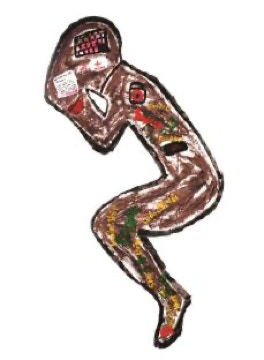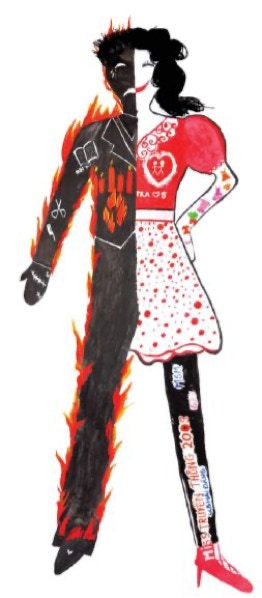Clinic/Masterclass
Participatory arts-based methodology workshop, September 30, 16:00
Two workshops “clinics” provide students and colleagues with an opportunity to try two participatory arts-based methods that underline the importance of observation. The results will be on displayed in the Aula and form part of the valedictory ceremony.
Body mapping
Participants have the opportunity to use body painting as an observation and analytical tool to map, reflect on and embrace diversity.
Observation is a fundamental aspect of human experience. It involves more than just seeing; it is an active process of engagement of the self with the world, allowing for deeper understanding and insight.
Observation is a critical tool for creation in art. John Berger in Ways of Seeing (1972) emphasize that observation in art is not just about replicating reality but about interpreting and transforming it. Berger argues that the act of seeing is influenced by a myriad of factors, including social conditioning and personal experiences, making observation a subjective yet powerful process in art. Social studies use observation in similar way. The social researchers actively observe the studied sites, studied participants and analyze the information collected with information. Observation, influenced by a myriad of factors, including social conditioning and personal experiences, that make observation a subjective yet powerful process in art.
This workshop attempts to use observation to create self-portrait art. In the process, the participants have the opportunity to dialogue with the self through the means of a 2-D paper and to create art that resonates their perception of the self on both aesthetic and emotional levels. The participants engage with a special “living” canvas - themselves, requiring an intimate and interactive form of observation.
Collaborative artmaking
Artists have often used artworks to express emotions and thus prompt public dialogue about contemporary challenges, but this dialogue does not always convene groups who have fraught relationships, for example activists and decision makers. Collaborative artmaking has been proposed as a tool to facilitate deliberation processes, within which stakeholder groups consider contentious challenges, such as the effects of environmental degradation on disadvantaged social groups. Collaborative artmaking develops relationships between groups within the deliberation process, as they jointly consider issues of mutual concern. The workshop will give participants the chance to undertake a brief collaborative artmaking activity, and observe the interactions it prompts.

